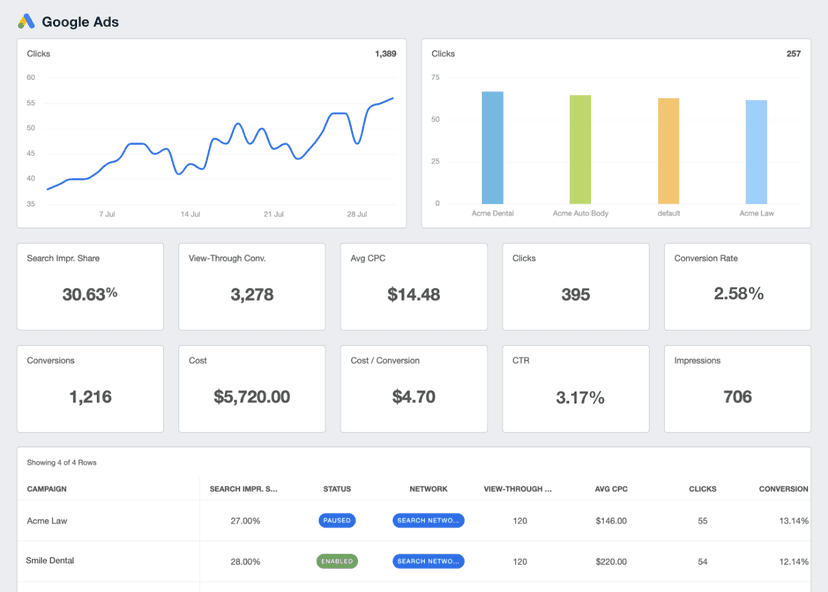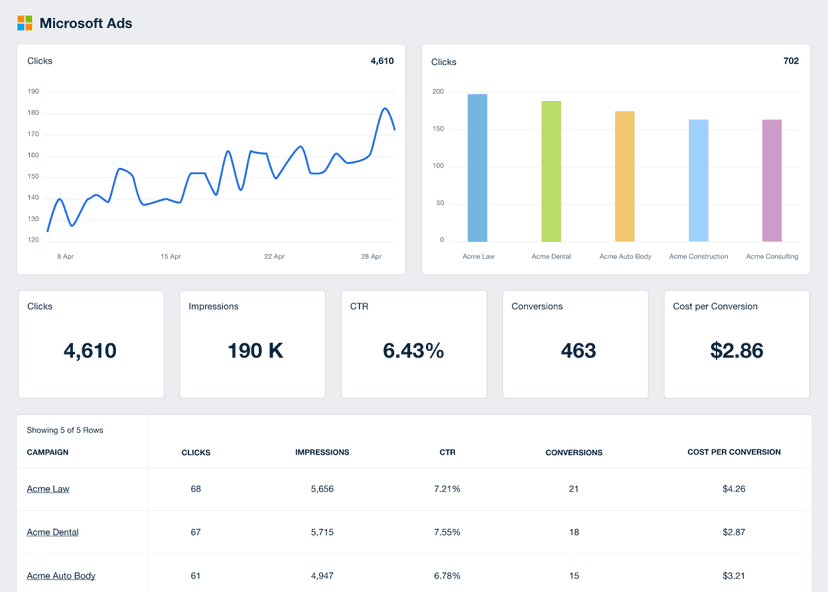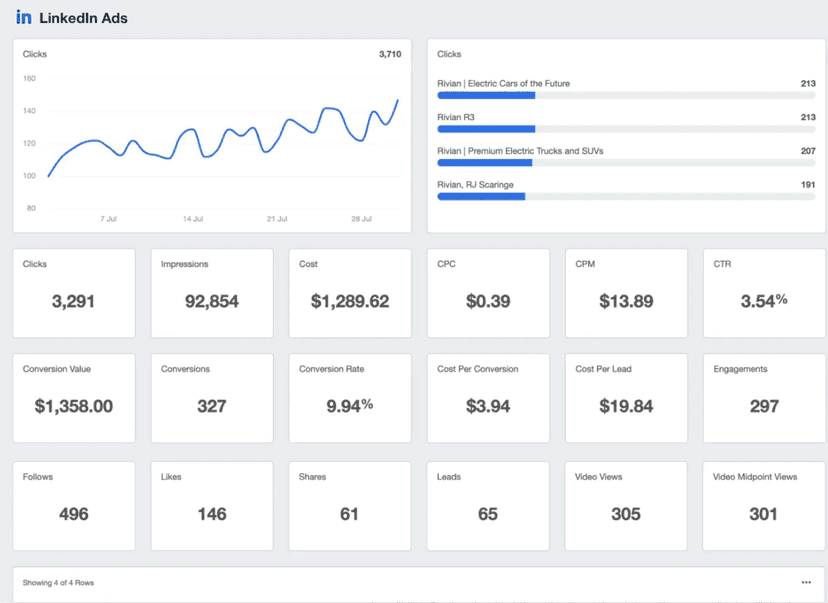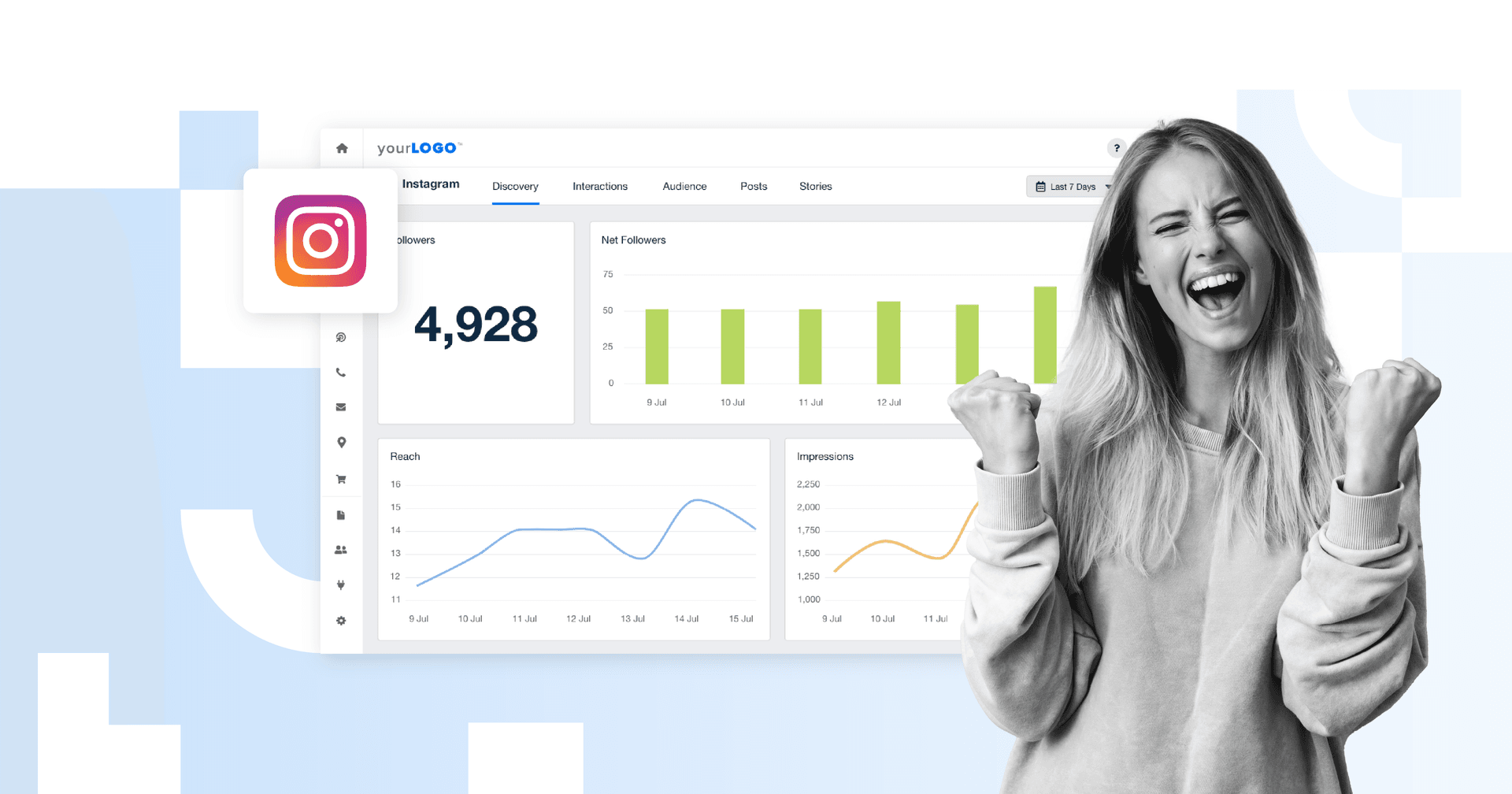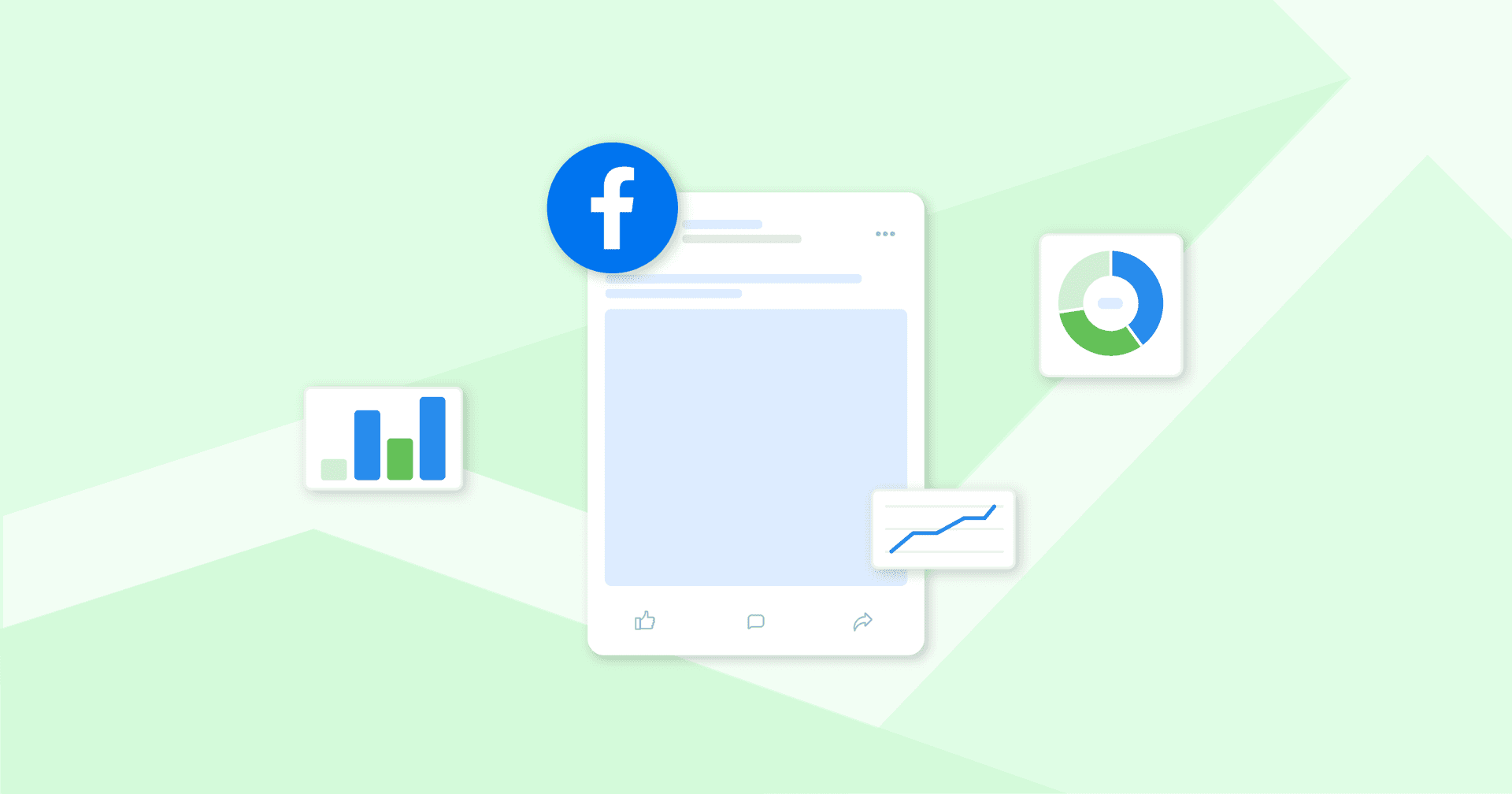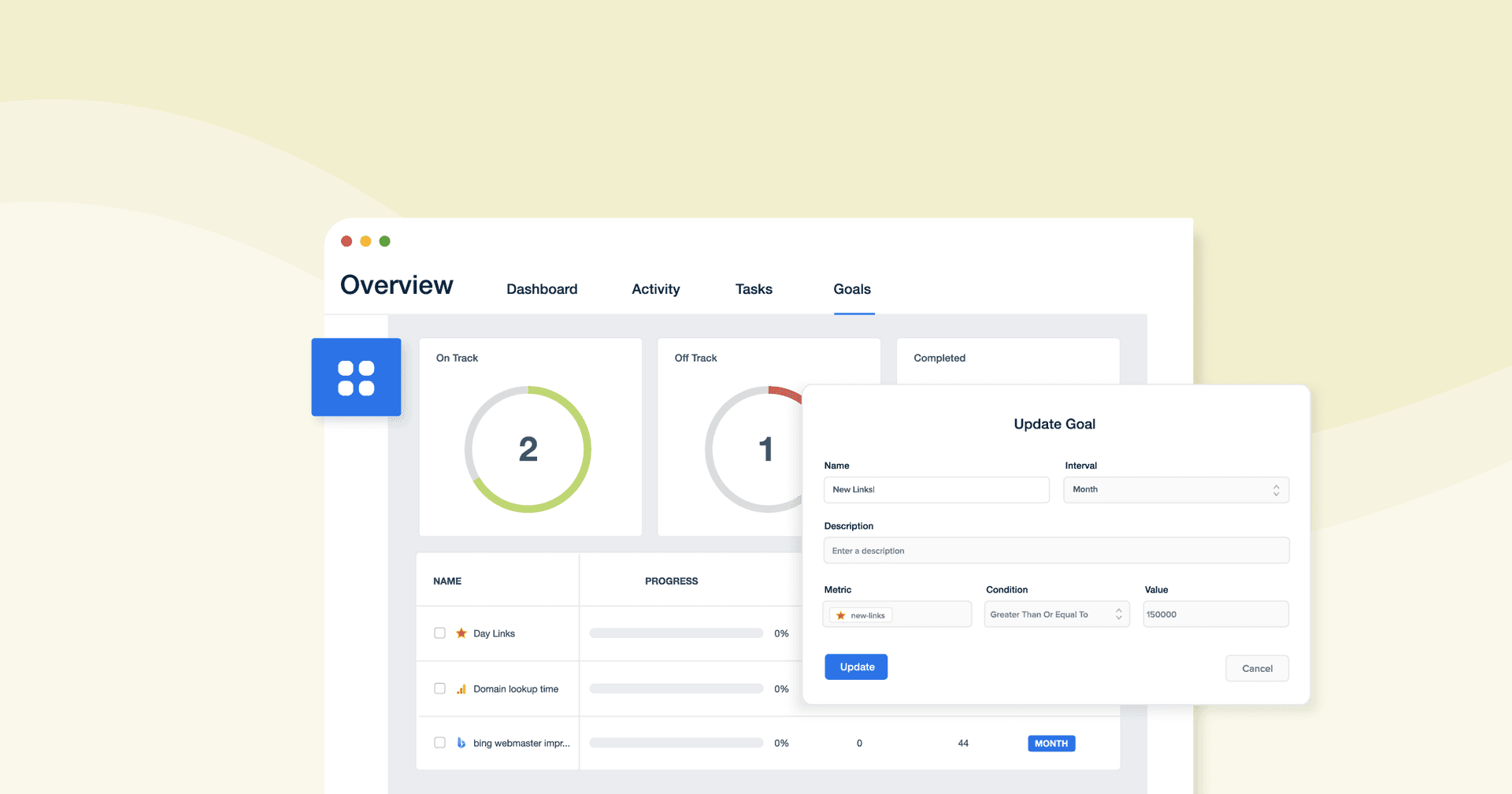Cost Per Reach
Client Reports
Show the relationship between client goals and revenue using CPR metrics.
Budget Allocation
Guide efficient use of ad spend to maximize the ROI of marketing efforts.
Audience Optimization
Avoid targeting overcrowded and expensive audiences.
Optimize Campaign Performance
Understand which strategies are more cost-effective in reaching potential customers.
Why Cost Per Reach Is Important
Cost Per Reach (CPR) gives detailed insight as to how every advertising dollar is spent and details how much budget is needed to target a particular audience. Lower Costs Per Reach show the efficiency of marketing strategies, while higher Costs Per Reach suggest areas for possible improvement.
Cost Per Reach is a vital metric in budget allocation. It helps to determine that an adequate budget for total advertising cost is set aside to ensure high ad frequency and reach during advertising campaigns.
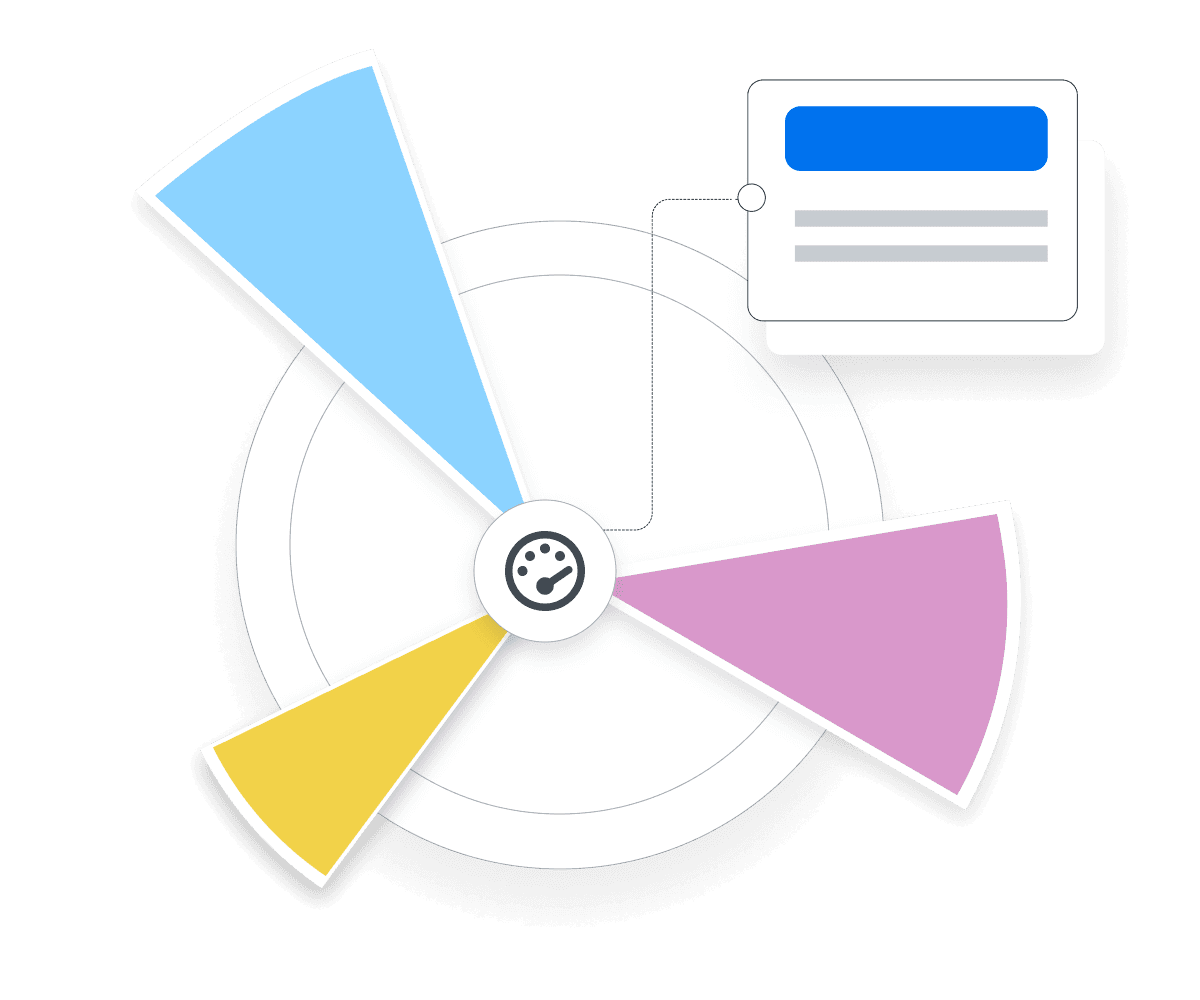
Stop Wasting Time on Manual Reports... Get PPC Insights Faster With AgencyAnalytics
How Cost Per Reach Relates To Other KPIs
Cost Per Reach is a piece of the puzzle within a network of other interwoven marketing campaign metrics. It connects with metrics like Conversion Rates, ROI, and Customer Acquisition Costs to convey the success of marketing campaigns. For instance, a lower Cost Per Reach results in increased ROI since a wider audience is reached with a lower budget.
While Cost Per Reach shows the cost of reaching a certain audience, conversion rates show the quality of the engagement exhibited by the reached audience, which impacts ad placement and targeting options.
This metric also impacts long-term metrics like lifetime value (LTV). By comparing LTV with CPR, agencies determine the cost of reaching an audience and the potential long-term benefits of engaging the audience and returning cost-effective gains from each campaign.
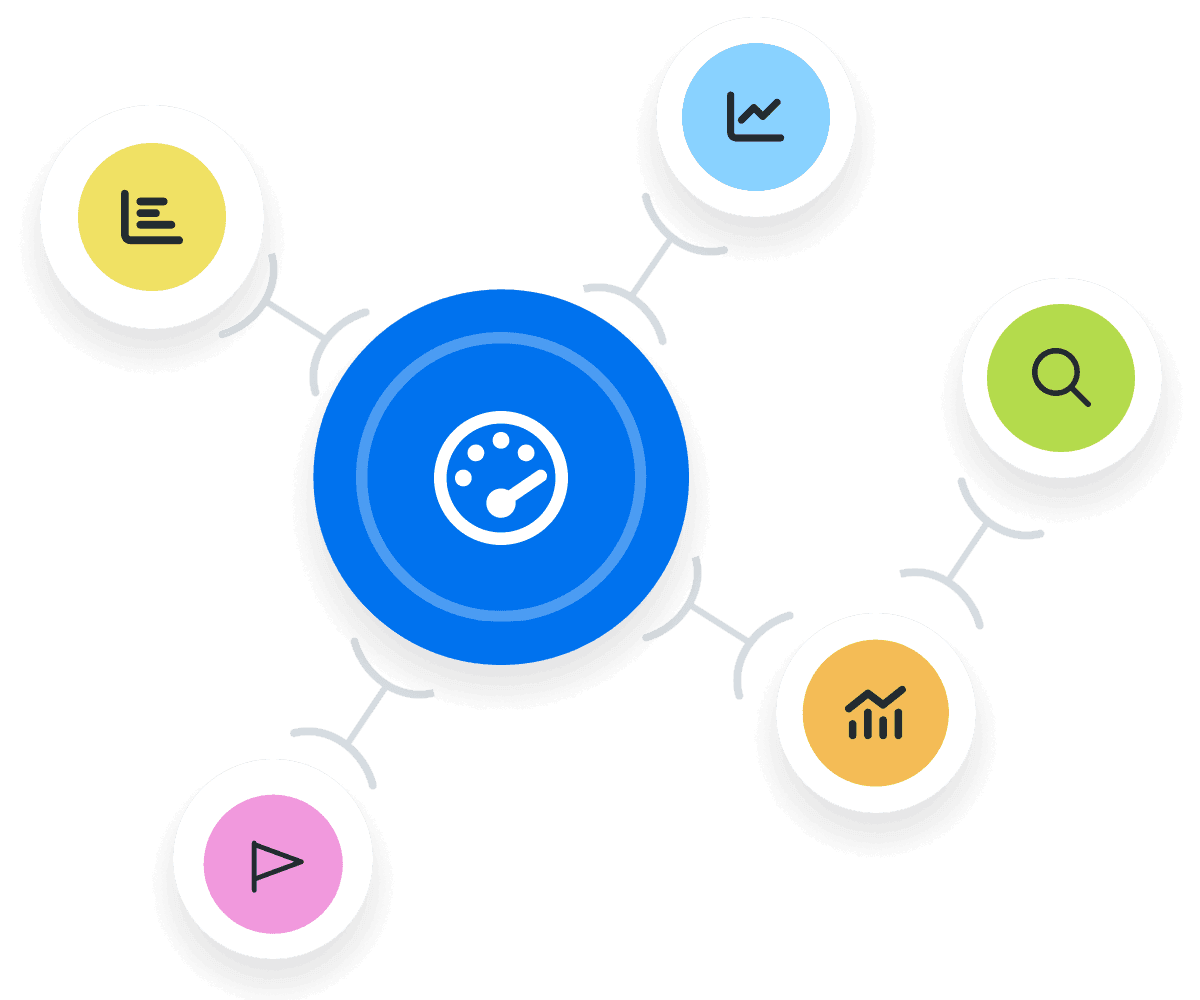
How To Calculate Cost Per Reach
Cost Per Reach is a straightforward metric. It shows the relationship between the cost of an ad campaign and the total number of individuals reached by the ad. For instance, if a campaign costs $3,000 and it reaches 30,000 people, the cost per reach would be $3,000 / 30,000, or $0.10 per person.
Cost Per Reach Formula Example
What Is a Good Cost Per Reach?
A good Cost Per Reach ranges from $0.20 - $1.00. It may be slightly lower when targeting a broad audience and higher in specialized advertising. However, a low CPR on it’s own does not mean that the campaign is driving a positive Return on Ad Spend.
What Is a Bad Cost Per Reach?
A Cost Per Reach that exceeds $1 or $2 is considered poor. This shows that massive resources are spent to reach an audience that may or may not convert in the long run. Higher CPRs should be justified by strong conversion rate and a positive ROI.
How To Set Cost Per Reach Benchmarks and Goals
Setting benchmarks requires that companies visit historical data, analyze competitors, and check industry trends.
For instance, some ad campaigns might have a Cost Per Reach that’s slightly higher than normal industry trends, yet they’ll yield a measurable ROI.
Categorize this data by campaign, marketing channels, and audience to properly identify patterns or trends.
Why Cost Per Reach Matters to Clients
Cost Per Reach serves as a yardstick for measuring campaign efficiency. For clients, a low CPR signifies success and efficiency with marketing campaigns, while a high CPR shows a loophole to be sealed. It helps clients understand the cost of reaching an audience during an ad campaign, guiding their decision-making process.
Cost Per Reach makes for budget accountability. It ensures that every dollar spent is duly maximized and accounted for in an ad campaign. This metric translates marketing jargon into relatable ROI because clients want to understand how much it costs to reach an audience versus the profit made from that audience.

Why Cost Per Reach Matters to Agencies
For agencies, Cost Per Reach is a signal of ad quality and campaign effectiveness. A change in this signal guides them to apply changes to their marketing strategy. Agencies want to achieve the best ROI possible with the least possible resources; hence, they’re particular about this metric.
A high Cost Per Reach could show inconsistencies in audience targeting, fierce market competition, and a low quality score. This helps agencies adjust ad campaigns for better targeting and overall results.
Also, when compared across various platforms and channels, this metric shows platforms that offer favorable rates, which allows ads to reach more people without remarkably increasing overall ad expenditure.

Save Time and Money by Automating Your Client Reporting
Best Practices When Analyzing and Reporting on Cost Per Reach
Cost Per Reach offers a comprehensive view of how effectively resources are utilized during marketing campaigns. It gives a run-down on the amount spent to reach each individual, and excellent reporting on this metric adds depth and professionalism to agency narratives.
Ensure Data Accuracy
Inaccurate data mars the credibility and usefulness of reports. Ensure that the data is double checked to prevent errors and mistakes.
Analyze Cost Per Reach Over Time
Examine CPR weekly, monthly, or annually. This shows trends and patterns that form with time and how they affect this metric.
Compare Cost Per Reach Across Channels
Analyzing and reporting CPR across channels, campaigns, and platforms reveals those with favorable rates and thus higher ROI.
Put Cost Per Reach in Context
Cost Per Reach provides more information when analyzed and reported alongside other Key Performance Indicators like Conversion Rates, Engagement metrics, and Click-through Rates.
Align Cost Per Reach to Client Goals
When reporting, clearly show how CPR affects the client’s business goals, like increased revenue, Conversions, and Click-through.
Include Actionable Recommendations
Point clients in the right direction with actions to take, like an increase in budget, more specific targeting, and improvement of ad creatives.
FAQs About Measuring and Optimizing Cost Per Reach (CPR)
Cost Per Reach is a valuable metric for agencies to evaluate cost efficiency in media planning. These FAQs explain how CPR works, when to use it, and how it provides valuable insights for reaching the right audience at the right balance of advertising costs.
In digital marketing, Cost Per Reach (CPR) is the average cost of reaching one unique user within a campaign’s target audience. Reach refers to the total number of unique users exposed to an ad at least once, making CPR a valuable metric for measuring cost efficiency and advertising costs across platforms.
Agencies use CPR during media planning to compare cost efficiency across channels and campaigns. It provides valuable insights into how much it costs to reach a specific audience segment, helping agencies allocate budget within a media mix and reduce costs while maximizing total impressions.
Cost Per Reach is most useful in campaigns designed for brand awareness, reach-based objectives, or audience expansion. For example, CPR is often used in display campaigns, video ads, or Google Ads campaigns that prioritize exposing the message to more users rather than driving immediate conversions.
Both CPR and CPM measure cost efficiency, but CPM (Cost Per Thousand Impressions) is based on total impressions served, regardless of whether they come from the same or different users. Cost Per Reach focuses on unique users reached, which provides more accurate insights into how widely a campaign message spread within the target audience.
CPR measures the cost of reaching a unique user, while Cost Per Engagement (CPE) measures the cost of an actual interaction, such as a click, like, or share. CPR is more relevant for awareness-focused campaigns, whereas CPE is better for performance-focused campaigns where active engagement is the goal.
Cost Per Reach is calculated by dividing total advertising costs by the total number of unique users reached during the same campaign period. Agencies often compare CPR across channels to ensure the right balance of cost efficiency and audience reach when planning campaigns.
Yes, Cost Per Reach can vary greatly depending on the industry, campaign objectives, and the media channel used. For example, reaching audiences through premium video ads may cost more than display campaigns, while niche industries may have higher CPRs due to smaller target audiences. Agencies should always compare CPR across channels and industries to ensure advertising costs align with client goals and cost efficiency benchmarks.
Facebook Ads Dashboard Example
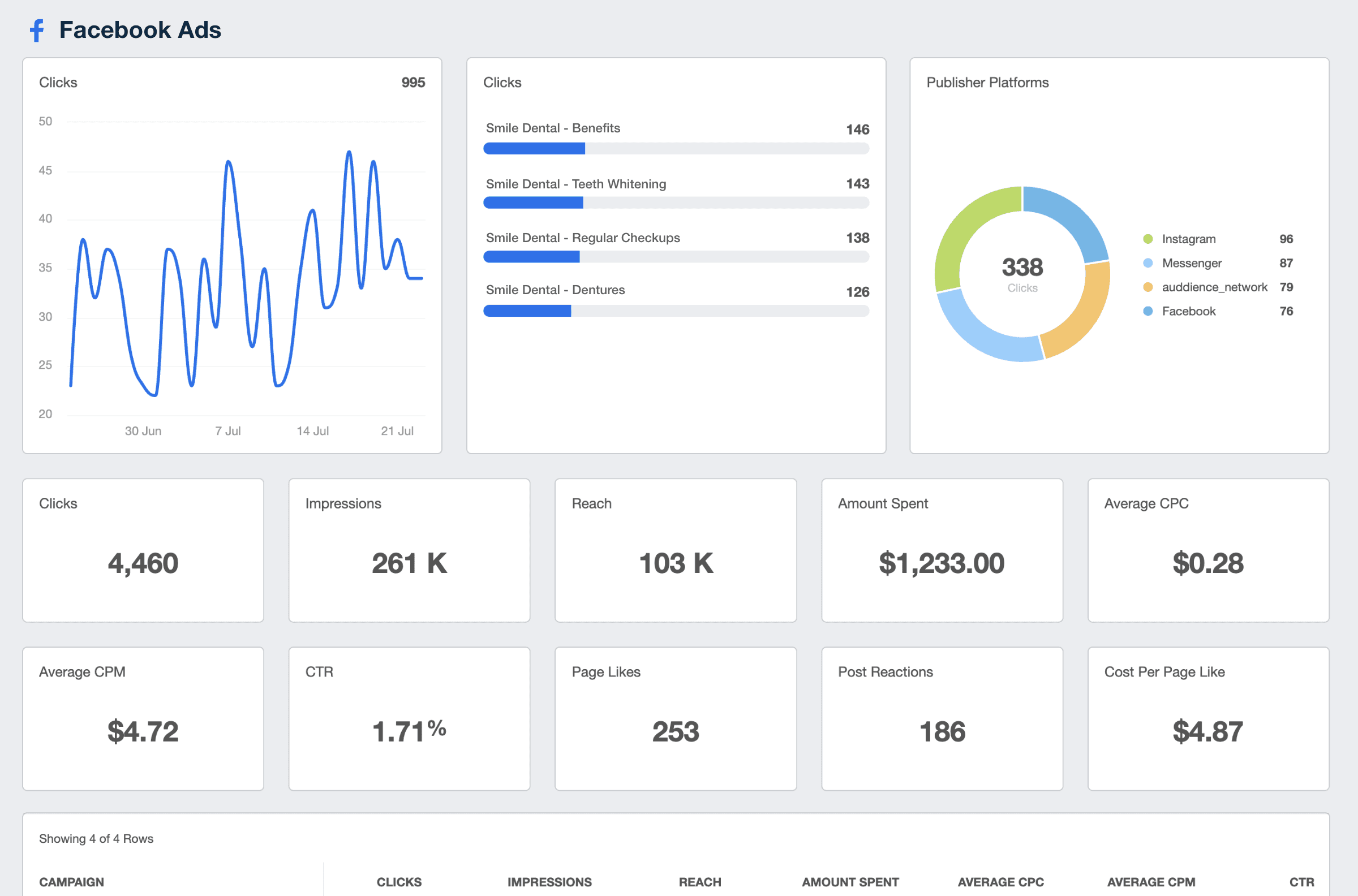
Related Integrations
How To Improve Cost Per Reach
Improving Cost Per reach goes beyond reducing the cost of reaching an audience. This metric has a direct impact on a company’s ROI and resources, hence the need to keep it at the best possible value.
Refine Audience Targeting
Refine audience segments to target those most likely to convert. Use data and performance from previous audiences to create lookalike audiences.
Optimize Ad Creatives
Create engaging visuals and persuasive copy, and test various formats of these creatives on different audience segments.
Increase Ad Budget
Higher ad budgets allows brands to reach more people, thus reducing CPR by spreading the cost across a large audience.
Related Blog Posts
See how 7,000+ marketing agencies help clients win
Free 14-day trial. No credit card required.


